The ultimate guide to handling potty training regression in 5 easy steps.
Potty training can be a challenging time for parents and children alike. After weeks or even months of successful trips to the bathroom, regression can quickly set in, leaving parents feeling overwhelmed and children confused.
I’ve been there and know how frustratingly hard it can get to see all your hard work go down the drain.
But fear not.
There are ways to overcome this setback and get back on the path to success.
Here are 5 easy steps to follow when your child suddenly starts regressing and you’re feeling confused about what to do next.
This post is about potty training regression
In this ultimate guide, we’ll explore tips and tricks from experts for dealing with potty training regression, from identifying the cause to encouraging independence.
So whether you’re just starting out or in the midst of a regression, read on to learn how to get your child back on track and achieve success in potty training.
Handling Potty Training Regression Like a Pro
This post contains affiliate links. As an Amazon Associate I earn from qualifying purchases.
1. Identify the Cause of Regression
One of the first steps in overcoming potty training regression is identifying the cause.
Regression can happen for a variety of reasons, such as changes in routine, stress or anxiety, illness, or a new sibling.
Regression happens when a potty-trained child starts having regular accidents, which might necessitate going back to diapers. But while the setback can be frustrating, it’s also completely normal—and it can usually be fixed by figuring out the cause.
parents.com
By understanding the cause, you can better address the issue and help your child get back on track with potty training.
Once the cause is identified, you can take steps to deal with the regression and help your little one build confidence and independence in using the bathroom.
This may involve setting up a routine, creating a reward system, or working with a pediatrician or therapist to address any underlying issues.
2. Handle Accidents Calmly
The most common challenge during potty training regression is dealing with accidents. No matter how well a child has been progressing, accidents are bound to happen.
When a child is regressing, these accidents increase in frequency and most parents are left completely baffled.
Firstly, know that regression is totally normal so don’t panic.
Secondly, when accidents do occur, it’s important for parents to approach the situation with patience.
Avoid punishment or shaming AT ALL COSTS as it can lead to negative associations with using the bathroom.
“Whatever you do, avoid yelling and scolding your child when potty training accidents occur.” Potty Genius
Instead, calmly guide your child to the bathroom and help them clean up. Emphasize that accidents happen and it’s all a part of the learning process.
Something that helped me stay calm while dealing with pee all over my dining room floor was using positive affirmations.
I would chant to myself over and over in my head ” There will be accidents, I will not flip out, I will be calm.”
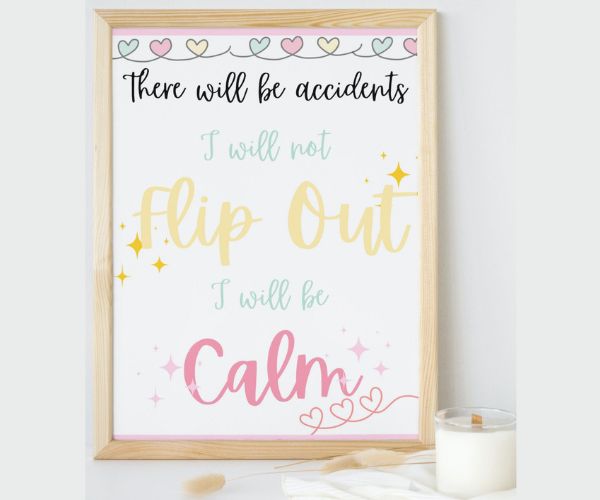
I cannot emphasize how MUCH this helped me in staying calm and not flipping out.
Having a visual for these affirmations is essential in helping you to remember to use them.
Check out these aesthetically designed potty training affirmations designed for parents to help them stay sane when their house is turning into a bathroom before their very eyes.
3. Re-establish a Positive Attitude
After weeks or even months of successful potty training, it can be discouraging to experience regression.
Children might suddenly start having accidents, or refuse to use the potty altogether. It can be easy for parents to feel defeated and frustrated.
Just remember: it’s SUPER important to maintain a positive attitude. And that is because children are highly receptive to the emotions of those around them.
One way to help reestablish a positive attitude is to celebrate even the smallest successes. When your child successfully uses the potty, make sure to praise them and show your excitement.
Let them know that you’re proud of them and that they’re doing a great job. This positive reinforcement can encourage them to continue making progress.
Another highly effective but little known secret to successful potty training is to make the whole process fun.
Yes you heard me right. FUN.
Your child needs to feel excited about training as if it’s something super cool that they’re setting out to do. How do you go about instilling this excitement in kids?
While reading potty books is a great way to explain potty training to your child, it’s not a hands-on kind of method because it doesn’t involve any participation from your child.
Doing potty training activities is a brilliant alternative because it gets kids involved, engrossed and most of all EXCITED.
Check out this Potty Training Activity Booklet in which kids trace, color, match, sort, giggle and laugh as they learn all about potty training the fun way.

4. Use a Potty Training Chart
One useful tool to add to your potty training arsenal is a potty training chart.
This can be a fun way to keep track of your child’s progress and make them feel proud of their accomplishments.
You can use stickers or stamps to mark each successful potty trip, and offer a reward after a certain number of stickers have been earned.
Using a potty training chart can also help keep you on track and ensure that you are consistent with your efforts.
It can be easy to forget to offer reminders or take your child to the potty, especially when you are busy with other tasks.
But with a chart, you can stay organized and make sure you are providing the necessary support and encouragement.
Looking for a cute chart for your toddler that’s adorable and also free? We’ve designed two super cute charts for you – a dino chart and a fairy chart. Simply put your email in the box below and we’ll deliver the charts to your inbox for free. You’re welcome 🙂
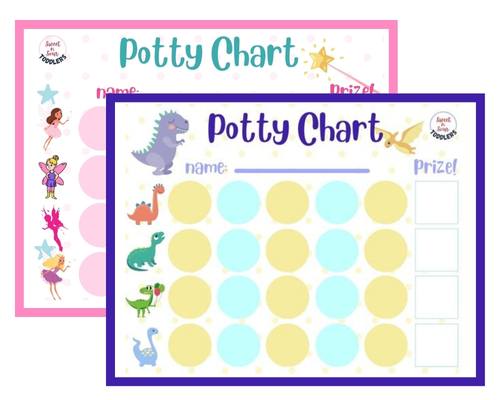
5. Encourage Independence
As your child starts using the potty again, you may feel the urge to continue being in charge of their bathroom needs.
However, it’s important to encourage independence and let them take on more responsibility for their own bathroom routine.
One way to do this is by gradually giving them more freedom and control.
For instance, you can let them choose when to use the potty or clean themselves after using it. This can help build their confidence and ensure that they feel in control of their bathroom habits.
It’s also important to avoid being too controlling or overbearing during potty training.
Instead, try to be patient and gentle, giving your child the space and support they need to develop their own skills.
This can help prevent setbacks and make the training process smoother and more enjoyable for both you and your child.
Encouraging independence during potty training not only helps your child feel more confident and in control, but also sets the stage for a healthy, independent future.
By gradually letting go of your involvement, you are teaching your child important life skills and helping them develop a sense of responsibility and self-sufficiency.
Ready to take the stress out of potty training? Interested in getting your toddler excited to train? Check out this potty training sanity saving pack that will transform your potty training journey from stressful to fun!
- Featuring an exciting 20 page potty training activity book, charts and certificates to keep kids excited and motivated to train
- Positive Affirmations you can print out and stick up somewhere to help you remember to stay calm during accidents
- Potty training tracker sheets to help understand your child’s cycle and their frequency of using the bathroom (this one hack alone helped me potty train both my kids in 3 days with minimal accidents – read about it here!)
- Potty training visual cards to help your child maintain good hygiene and remember to flush and wash hands
To Wrap Up…
In conclusion, potty training regression may be a frustrating hurdle for both you and your little ones, but it is not insurmountable.
By identifying the cause of regression, staying calm during accidents, reestablishing a positive attitude, using a potty training chart and encouraging independence, parents can help their child get back on track and achieve potty training success.
Remember to be patient and consistent, celebrate small victories and keep pushing forward.
As the saying goes, “potty training is a journey, not a destination,” and with dedication and perseverance, you and your child can make it to the finish line.
I wish you the very best in your journey ahead 🙂
This post was about potty training regression
We think you’ll enjoy reading these posts next:
15 Steps to Potty Train a Stubborn Toddler Girl in 3 Days
20 Genius Potty Training Reward Ideas (that seriously work!)
15 Clever Tips for Leaving the House While Potty Training
20 Insanely Fun Potty Training Activity Sheets for Toddlers
12 Genius Hacks to Make Potty Training Less Stressful
10 Truly Awful Potty Training Mistakes You Should Know About

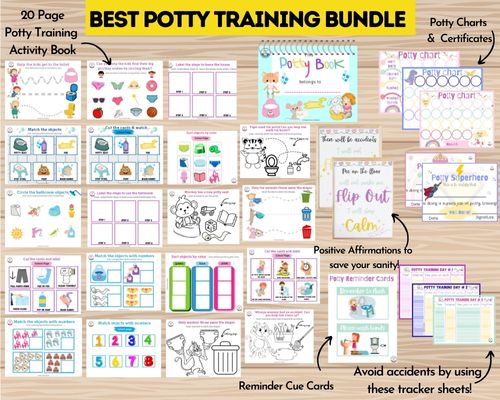
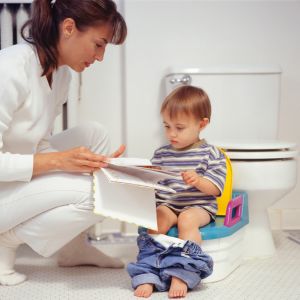
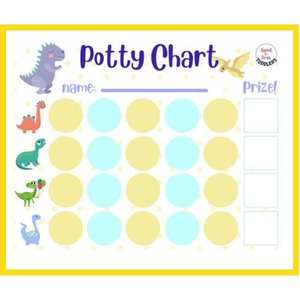
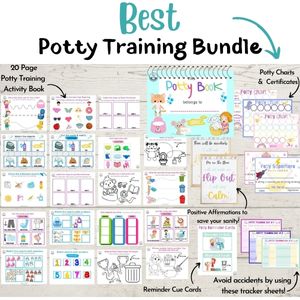

Leave a Reply